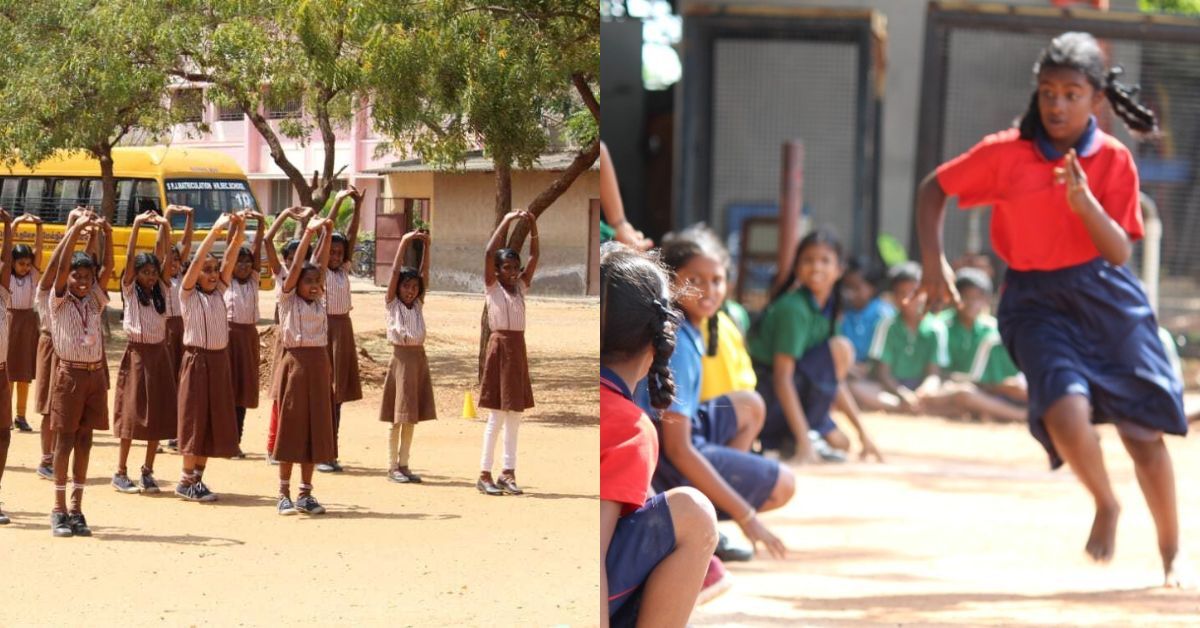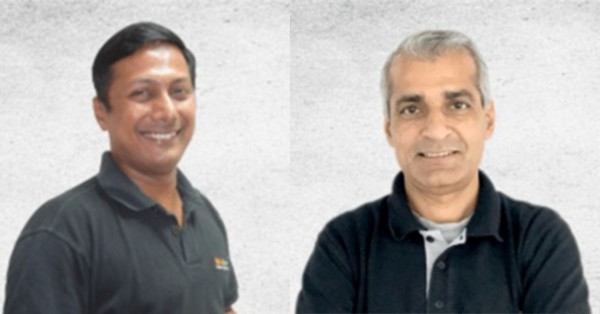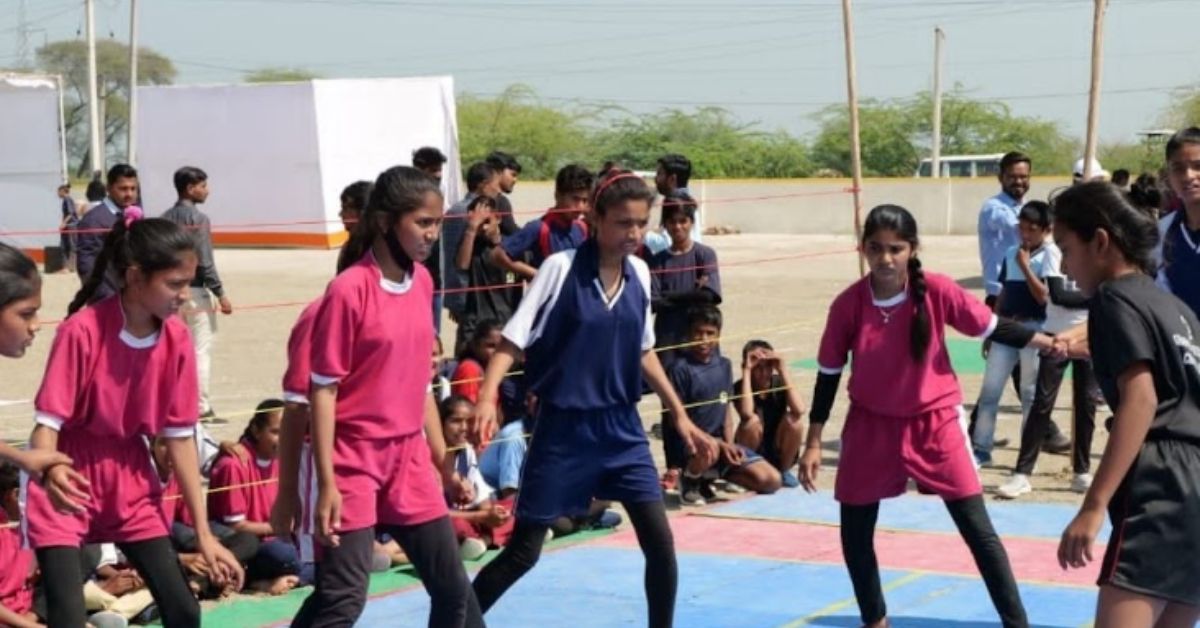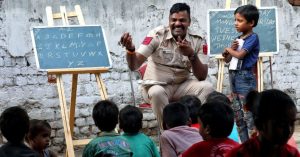‘Play Is Education’: 2 Bengalureans Use Play To Empower 50000 Kids in & Beyond the Field of Sport
Saumil Majmudar and Parminder Gill run Sportz Village, a Bengaluru-based organisation that uses sports and play as a medium of education. Sportz Village Foundation, its non-profit subsidiary helps children from public schools (rural & urban) benefit from sport in terms of better educational, health and developmental outcomes. The organization also helps students become athletes playing at district, state and national levels in a variety of sports.

When Saumil Majmudar and Parminder Gill set up Sportz Village in 2003, it was to highlight why ‘play’ is important in a child’s overall development.
Gill notes, “Some of us felt strongly that play was being missed out. When we went to schools, and then when our kids went, many things had changed. But there was no change in how schools or parents looked at play or physical activity — rather, we saw it diminishing from children’s lives for many reasons [including a sedentary lifestyle, the use of gadgets as opposed to active playtime, etc.]”

And so, Sportz Village was set up to get children involved in play and sport as part of their core education. For roughly its first decade, the Bengaluru-based organisation worked with private schools that were able to pay for their sports and physical education programmes. Now, Sportz Village operates in 22 states — including Delhi-NCR, Uttar Pradesh, Rajasthan, Karnataka, Tamil Nadu, Maharashtra, Haryana, and West Bengal — and does significant work in rural areas as well.
Why play?
Soumil explains that over the last 20 years, he had tried multiple models of getting children to play in sustainable and scalable ways before arriving on the school partnership model.
“Providing adults — who control the child’s quality and quantity of place experience — with the right data and visibility around the process, as well as on the impact on goals that they care about (attendance, grades, fitness, sports, and so on) can help get 100 million children to play,” he opines.
This, he notes, is possible through a structured programme that integrates with the school PE timetable, is designed for limited space and time, and provides resources, data, and visibility to the various stakeholders involved. Most of all, it gets “100% of the children to develop the right fitness, skills, and attitudes to play for life”.
In 2017, the organisation launched Sportz Village Foundation to help raise Corporate Social Responsibility (CSR) funds and expand its outreach in government schools.
“The CSR law requires a corporate to invest only with a non-profit,” Gill says. “The new structure was important so that we don’t have constraints in raising funds for running programmes in government schools. The Foundation also allows us to achieve different goals, even though the structure of our programme and the quality of experience for children is uniform in private and public schools. In government schools that cater to children from underserved communities, there are different things ailing the system…the biggest piece is the socio-emotional skills.”
Some examples of socio-emotional skills are the ability to understand your thoughts and feelings and the ability to relate to others. These skills are widely recognised as vital to personal development and building healthy relationships.
50,000 lives transformed
Gill says that keeping children, especially girls, in school was another one of their priorities, as the drop-out rate in government schools is quite high.
The programme, which is called ‘Sport for Change’, functions at three levels. At the base is sports education, which involves teaching children basic physical and sports skills. “The core [of the programme] was to integrate children in play and sport because it was central to their experience and development process, regardless of whether they want to be athletes or not,” Gill said.
According to Upma Kanswa Jain, who manages marketing and communication for the Foundation, over 50,000 students are currently engaged in their programmes. They also wanted to create a pathway for those who performed well in a sport and wished to pursue it further. So, the next level is their sports excellence programme PathwayZ, where interested or selected children are given expert training in their sports development centres (SDC).

These centres are located within the schools in which they work. At the highest level, they take the best-performing student-athletes from the SDCs and admit them into the high-performance learning centres (HPLC), where they are also provided with match and tournament opportunities, and given scouting information about district, state, and national selection trials.
Of the 50,000 students in their programmes, over 2,200 are enrolled in sports development centres, with roughly 60% being boys and the rest girls.
Finally, there are about 40 students in their high-performance learning centre, of which roughly half are boys and half are girls. “They get invited to trials that are happening at the district level,” Jain said. “If they perform, then state level, then national level events.”
Shaping athletes
Different geographical areas offer different sports depending on the infrastructure available in the schools. For example, in Lucknow and Noida, children can choose between volleyball, cricket, football, kabaddi and athletics. The sports development centres operate six days a week and host sessions lasting two hours a day. Depending on the school, the sessions are held either in the morning or in the evening. The children are given t-shirts, shorts, shoes and additional nutrition in the form of bananas, eggs and milk.
In situations where a child’s parents are reluctant to let them attend the sports programmes, the Foundation’s programme managers reach out to the parents to tell them how good their child is at sports, and that everything is paid for, so they don’t need to worry about any additional expenses.
According to Ranvijay Gupta, one of the programme managers in Uttar Pradesh, the Foundation has faced the odd protest as well. “[The parents] tell us, ‘You people are spoiling our kids by making them go outside and play. This is not our culture. We cannot let them go outside and play’.”
At the same time, he makes it clear that it is possible to change the minds of even these parents. “It takes time,” he says. “I take the help of the other parents whose children are in the programme. I tell them to come and support us. We have a second meeting, and a third meeting. After that, we can mostly convince them, and they send their wards to us.”
Based on his experience, around 70% of the responses they get from parents are positive.
Gupta (38) is in charge of the programmes in Lucknow & Noida-based schools supported by the HCL Foundation. He joined Sportz Village in 2010 and moved to the Foundation in 2017. According to him, they had just 5 to 10 girls in their SDCs when they started the programme, but now they work with over 600 girls on a regular basis.
“We have helped more than 450 children play in district-level tournaments, more than 100 at the state level, and over 30 at the national level to date,” he said. “This is very satisfying for me.”
Building role models
One of those girls is Rukhsar, a Class 11 student at Govt. Girls Inter College Vikash Nagar in Lucknow, Uttar Pradesh. She is an avid kabaddi player and wants to represent India one day. However, previously, her circumstances held her back. Her father earns Rs 7,000 a month working in the private sector and did not support her desire to be a kabaddi player, though her mother and three siblings did.
The Sport for Change programme cleared the way for her to play by giving her the opportunity to train with expert coaches and sports nutritionists, while also learning life skills such as leadership.
As a result, in just the last six months, Rukhsar has been selected for the Uttar Pradesh senior women’s state and junior girl’s state kabaddi teams. She is also a promising athlete in the triple jump, where she finished first at the district level.
“My parents feel much better now because I am travelling to different places, meeting new people and my game is getting better,” Rukhsar says.
The Foundation hires specialised coaches to run its sports excellence programmes. The coaches must have played at the state level in their sport and hold a minimum qualification of a Bachelor’s in Education. However, as the organisation has grown, hiring good coaches has become a constraint because funds have not kept pace.

They are also training children from their programme as coaches. Since the Foundation is relatively new, the first batch of potential coaches from within is only now on the horizon. “Very soon, we will hire two or three girls from our programme,” Gupta says. The advantage of having homegrown coaches is that they are already familiar with the programme, and being from the same community as the children, can sustain the programme and serve as role models too.
Beyond the field of sport
Sportz Village Foundation has conducted a number of studies to determine the impact of its programmes on education, health and empowerment. One of them concluded that in the roughly 390 schools supported by Ashok Leyland, the children were more likely to attend school and showed a 10% increase in fitness levels, 18 months after the programme was launched.
Another study with the Sports Authority of Gujarat demonstrated a 23% increase in female participation in after-school programmes, two years after the launch of the programme.
They also conduct an annual health survey, of which the most recent results claim that 95% of children improved their fitness levels, 92% improved their communication abilities and 78% developed greater emotional capabilities in the face of challenges.
The Foundation has set ambitious goals for 2023. It wants to add 100,000 children to its programmes and enable over 1,000 student-athletes to perform at an elite level. Improving gender perception and inclusivity is another priority.
“There are still some barriers in our society around gender,” Gupta says. “I feel that at the policy level, inclusivity should equally be a focus so that more talented girls can come forward without any hesitation, participate in sports and eventually win medals for India.” If you found our stories insightful, informative, or even just enjoyable, we invite you to consider making a voluntary payment to support the work we do at The Better India. Your contribution helps us continue producing quality content that educates, inspires, and drives positive change. Choose one of the payment options below for your contribution- By paying for the stories you value, you directly contribute to sustaining our efforts focused on making a difference in the world. Together, let’s ensure that impactful stories continue to be told and shared, enriching lives and communities alike. Thank you for your support. Here are some frequently asked questions you might find helpful to know why you are contributing?

“Nurturing athletes, especially girls, can serve as a way to create role models for children and youth of India, within and beyond the field of sport,” Gill says.
Edited by Divya Sethu
This story made me
-
97
-
121
-
89
-
167














